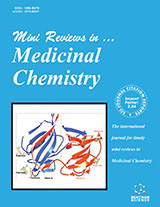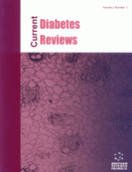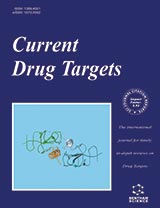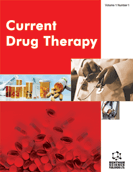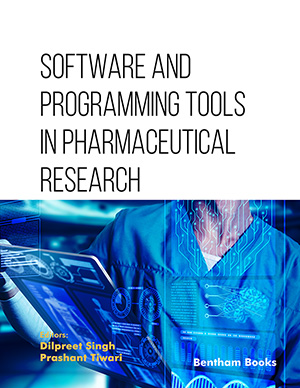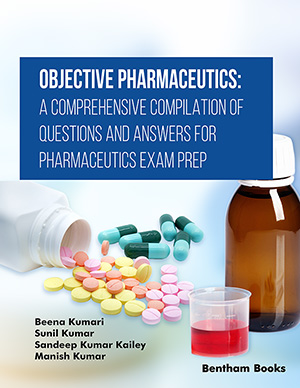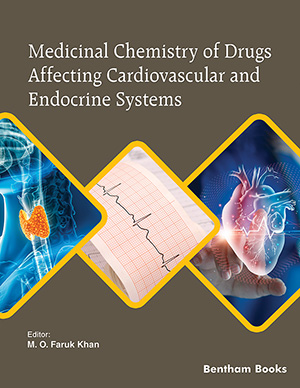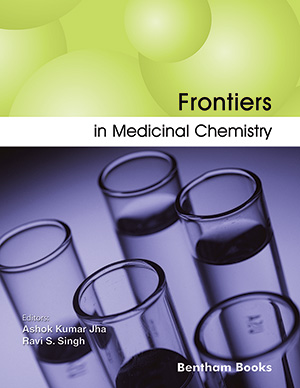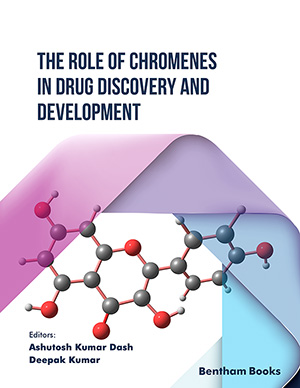Abstract
Iron is essential for human life, however it can be toxic through Fe ability to generate oxygen-derived radicals. This work reviews the main features of Fe binding in the cell and its association to these processes. The chemical nature of the Fe extracted by chelation therapy in pathophysiological situations is also analyzed.
Mini-Reviews in Medicinal Chemistry
Title: Forms of Iron Binding in the Cells and the Chemical Features of Chelation Therapy
Volume: 9 Issue: 9
Author(s): S. Puntarulo and M. Galleano
Affiliation:
Abstract: Iron is essential for human life, however it can be toxic through Fe ability to generate oxygen-derived radicals. This work reviews the main features of Fe binding in the cell and its association to these processes. The chemical nature of the Fe extracted by chelation therapy in pathophysiological situations is also analyzed.
Export Options
About this article
Cite this article as:
Puntarulo S. and Galleano M., Forms of Iron Binding in the Cells and the Chemical Features of Chelation Therapy, Mini-Reviews in Medicinal Chemistry 2009; 9 (9) . https://dx.doi.org/10.2174/138955709788922674
| DOI https://dx.doi.org/10.2174/138955709788922674 |
Print ISSN 1389-5575 |
| Publisher Name Bentham Science Publisher |
Online ISSN 1875-5607 |
Call for Papers in Thematic Issues
Bioprospecting of Natural Products as Sources of New Multitarget Therapies
According to the Convention on Biological Diversity, bioprospecting is the exploration of biodiversity and indigenous knowledge to develop commercially valuable products for pharmaceutical and other applications. Bioprospecting involves searching for useful organic compounds in plants, fungi, marine organisms, and microorganisms. Natural products traditionally constituted the primary source of more than ...read more
Computational Frontiers in Medicinal Chemistry
The thematic issue "Computational Frontiers in Medicinal Chemistry" provides a robust platform for delving into state-of-the-art computational methodologies and technologies that significantly propel advancements in medicinal chemistry. This edition seeks to amalgamate top-tier reviews spotlighting the latest trends and breakthroughs in the fusion of computational approaches, including artificial intelligence (AI) ...read more
Natural Products and Dietary Supplements in Alleviation of Metabolic, Cardiovascular, and Neurological Disorders
Metabolic disorders like diabetes, obesity, inflammation, oxidative stress, cancer etc, cardiovascular disorders like angina, myocardial infarction, congestive heart failure etc as well as neurological disorders like Alzheimer?s, Parkinson?s, Epilepsy, Depression, etc are the global burden. They covered the major segment of the diseases and disorders from which the human community ...read more
Natural Products in Drug Discovery
Natural products have always been one of the important ways of drug discovery due to their novel skeleton and diverse functional group characteristics. According to statistics, between 1981 and 2019, the FDA approved a total of 1,394 small molecule drugs for marketing, of which 930 marketed drugs originated from the ...read more
 10
10
- Author Guidelines
- Graphical Abstracts
- Fabricating and Stating False Information
- Research Misconduct
- Post Publication Discussions and Corrections
- Publishing Ethics and Rectitude
- Increase Visibility of Your Article
- Archiving Policies
- Peer Review Workflow
- Order Your Article Before Print
- Promote Your Article
- Manuscript Transfer Facility
- Editorial Policies
- Allegations from Whistleblowers
Related Articles
-
Contextualizing Genetics for Regional Heart Failure Care
Current Cardiology Reviews Cardiac Chamber Volumetric Assessment Using 3D Ultrasound - A Review
Current Pharmaceutical Design The Chaperone-like Activity of Rat HspB8/Hsp22 and Dynamic Molecular Transition Related to Oligomeric Architectures In Vitro
Protein & Peptide Letters Inflamm-ageing and senescence in gout: the tale of an old king’s disease.
Current Aging Science The Progress Towards the Development of DHQO Derivatives and Related Analogues with Inotropic Effects
Mini-Reviews in Medicinal Chemistry Role of Oxidative-Nitrosative Stress and Downstream Pathways in Various Forms of Cardiomyopathy and Heart Failure
Current Vascular Pharmacology Artificial Neural Networks in Cardiovascular Diseases and its Potential for Clinical Application in Molecular Imaging
Current Radiopharmaceuticals Do Adult Stem Cells Ameliorate the Damaged Myocardium? Human Cord Blood as a Potential Source of Stem Cells
Current Vascular Pharmacology Topoisomerase Enzymes as Therapeutic Targets for Cancer Chemotherapy
Medicinal Chemistry A Clinical Perspective of Soluble Epoxide Hydrolase Inhibitors in Metabolic and Related Cardiovascular Diseases
Current Molecular Pharmacology Emerging Roles of Meis1 in Cardiac Regeneration, Stem Cells and Cancer
Current Drug Targets Persistent Pulmonary Hypertension of the Newborn: Physiology, Hemodynamic Assessment and Novel Therapies
Current Pediatric Reviews Selectivity Problems with Drugs Acting on Cardiac Na<sup>+</sup> and Ca<sup>2+</sup> Channels
Current Medicinal Chemistry Stress Echocardiography
Current Pharmaceutical Design Controlled Release of Growth Factors for Regenerative Medicine
Current Pharmaceutical Design Combined Anticancer Therapies: An Overview of the Latest Applications
Anti-Cancer Agents in Medicinal Chemistry Acute Cerebral Blood Flow Variations after Human Cardiac Arrest Assessed by Stable Xenon Enhanced Computed Tomography
Current Neurovascular Research The Use of Novel Oral Anticoagulants in Atrial Fibrillation
Cardiovascular & Hematological Disorders-Drug Targets Obesity, Diabetes and Atrial Fibrillation; Epidemiology, Mechanisms and Interventions
Current Cardiology Reviews Clearing the Brains Cobwebs: The Role of Autophagy in Neuroprotection
Current Neuropharmacology


